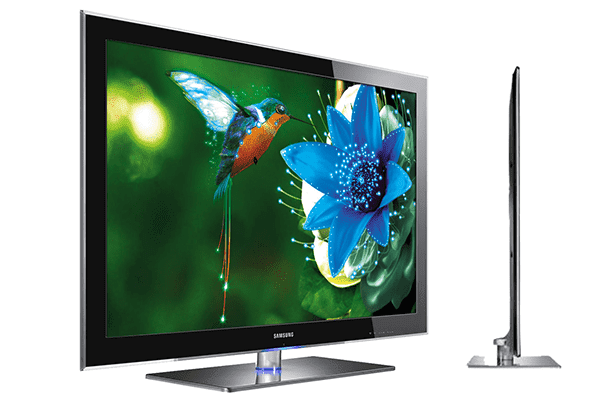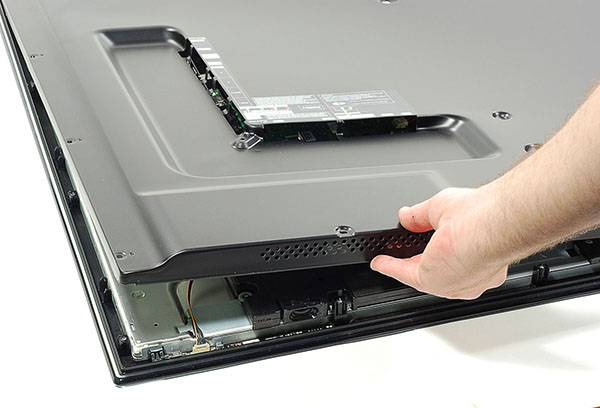What is the difference between LED TVs and conventional LCD panels and are they worth the money?
The store consultant praised the LED TV that you liked so much that you wondered if you should believe him? Understanding whether it’s worth overpaying for this revolutionary technology, and whether it is revolutionary at all, will help you analyze the operating principle and advantages of such televisions.
Why LED?
LED - the abbreviation used to abbreviate the phrase Light Emitting Diode, or the good old LED in Russian. Translating the name given to such televisions by firms that started to produce LED models first did not: apparently, the “LED TV” does not sound intriguing enough. But how are LEDs used in next-generation TVs?
LED TV ... It sounds like something very complex and high-tech! But to understand what it is, it is enough to look around. What lamps stand in your pocket flashlight? And which ones are in the backlight in the kitchen? Remember how the oncoming cars blind with LED headlights and how brightly the New Year's garlands burn. The era of incandescent lamps has given way to the era of fluorescent lamps, but it is already behind: wherever it comes to lighting, the LEDs command the parade.
So they decided to use them in televisions instead of fluorescent lamps with a cold cathode, which were used in liquid crystal televisions of the previous generation. Exclusively for backlighting. And you thought the LEDs will add up the image itself? Oh, these are the technologies of the future, and OLED screens, although they exist, are still imperfect and cost crazy money.
How does it work and what does it give?
Now that you are aware of LED technology and know what it means, it's time to figure out what it gives compared to plasma or LCD TVs. We will not load large amounts of technical information, because this is the same LCD TV in which the backlight has changed. But the main characteristics of the LEDs are still worth mentioning. After all, it is they who are called upon to take image quality to a new level!
- You probably noticed that the LEDs are much brighter than ordinary lamps. This property is one of the key, as the powerful backlight provides high brightness of the screen, which means that colors will be visible in all its glory even in a room with bright light, which cannot be said about plasma or LCD.
- The rejection of the massive CCFL backlight allowed the TV case to be strikingly thin: the diodes are also good because they do not take up much space. So, the thickness of the housing of an LED TV can be less than a centimeter, depending on the subspecies of the technologies used. Such a technique looks, of course, super modern.
- When was the last time you changed the LED? Most likely, if this happened at all in your life, it was quite a long time ago when they were not so perfect and widely used. Now, their life is measured for decades, while the likelihood that it will burn out or overheat tends to zero.
- It may not make much difference, but an LED TV consumes less power than an LCD or plasma, since the LEDs themselves need several times less power. If the TV in the house is constantly on, it may be possible to slightly reduce the amount in the receipt for paying for electricity.
- This has no effect on the quality of the picture, but it's nice to know that using diodes can contribute to the preservation of the environment. They do not use aerosols and mercury, they do not require special disposal. Truly modern technology must be environmentally friendly!
Sounds good: improved image quality, energy saving, low probability of breakage.But just which LED TV to choose?
By the way
If the plasma, although not without flaws, was considered more perfect than conventional LCD TVs, then the LED LCD panels wiped her nose: the image quality is practically inferior to them, and they consume much less energy, and most importantly, are cheaper.
What subspecies of LED backlighting exist?
As before, the LEDs illuminate the matrix behind the LCD screen, but it can be illuminated in various ways. LED TVs can be divided into models with white and color backlight and models with full backlight or backlight at the edges.
- It would seem that a model with fewer LEDs located around the perimeter, and sometimes even along only one edge, should cost less, but this is not so. Edge LED TVs use a sophisticated system of light reflectors that allows you to fully illuminate the screen, so this model will cost more. But it will be thinner: unlike Full LED or Direct LED, where the matrix of LEDs is behind the matrix, the Edge TV can be found less than a centimeter wide.
By the way
Among the disadvantages of LEDs, only small glare at the edges on Edge Led models and too strong black brightness due to local dimming technology can be noted, which can become a disadvantage if image details are lost in the darkened area.
- True, thin Edge panels use only white backlighting. But do not be discouraged: with a multi-colored RGB backlight, the case will be completely thicker, the equipment will consume more energy, it will cost a lot of money, and from the bonuses you will essentially receive only a more complete transmission of halftones, which, by the way, are not always transmitted accurately. Yet white light is currently more popular than multi-colored backlighting.
- Edge LED TV has the right features, but expensive? Then select the Full model with the same white light. Such televisions are not inferior to Edge models in image quality, and the contrast is even more impressive. Their price is lower due to simpler technology that does not require expensive reflectors and diffusers. Yes, it will be a little thicker, but this parameter is still not decisive.
It turns out that until OLED technology became available, LED models are indeed the most affordable high-tech option for purchase at a reasonable price. Maybe their device is not revolutionary either - do not rush to throw out a working plasma or LCD TV - but if the question of buying new equipment has already arisen, then LED TVs are definitely worth your attention.


